In recent years, with the rapid progress of 3D printing technology, the additive production of metal materials has gradually become a focal issue in the field of industrial production. Metal matrix composites have received more and more attention due to their good mechanical properties and processing performance. In particular, stainless steel, as an alloy material that combines corrosion resistance, mechanical strength and cost-effectiveness, has received widespread attention for its feasibility in 3D printing applications. At present, many companies at home and abroad have carried out related research work and achieved certain results, but its application areas still need to be further expanded. This article will conduct an in-depth analysis of the core technology, cost, usage scenarios, challenges faced and future trends of stainless steel 3D printing.
Can 3D printers print stainless steel directly?
3D printers are capable of printing stainless steel directly, but require the use of industrial-grade metal 3D printing equipment, such as those with technologies such as DMLS, SLM, EBM, and more. The average home FDM printer is limited by technology and materials to complete the printing of stainless steel.
Ordinary 3D printers can't print stainless steel for the following reasons:
- On a technical level, the highest temperature resistance of plastic consumables used in home fused deposition modeling (FDM) printers is only about 250°C, compared to about 1400°C in stainless steel. In addition, stainless steel printing requires the use of ultra-high temperature energy sources such as lasers and electron beams, as well as an inert gas shielded environment, which can only be met by industrial-grade equipment.
- From a material point of view, ordinary printers use plastic consumables, while stainless steel printing requires special 15 - 45μm spherical metal powders, such as 316L, 17 - 4PH, etc., and these metal powders must comply with international standards such as ASTM F3184.
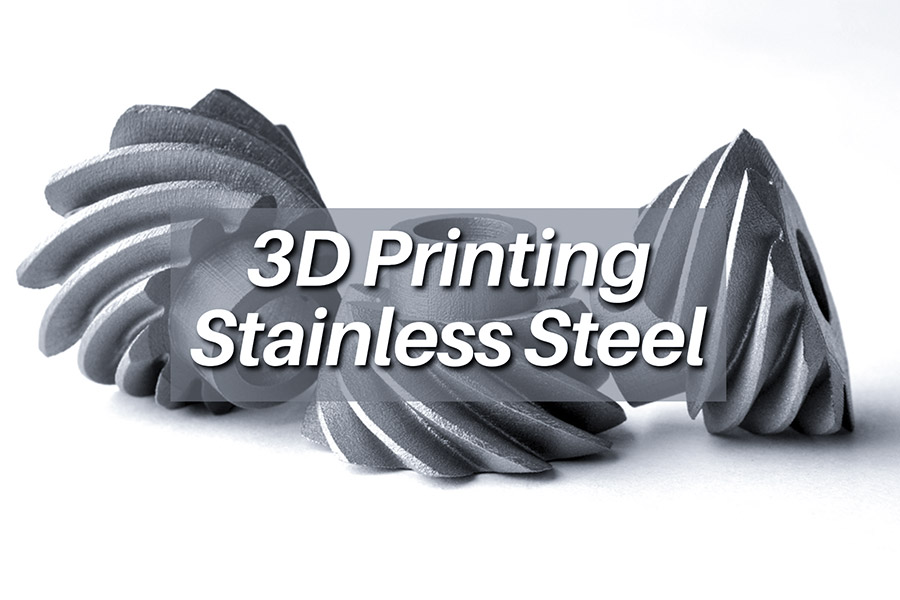
Key material requirements for stainless steel 3D printing
| Parameter | Standard value | Risk of non-compliance |
|---|---|---|
| Powder particle size | 15-45μm | Poor fluidity, uneven layering |
| Sphericity | >95% | Increased printing porosity (>0.5%) |
| Oxygen content | <0.1% (inert gas protection) | Material embrittlement, strength reduction by 30% |
| Typical grades | 316L、17-4PH、304L | Non-standard materials are prone to printing failure |
What are the mainstream technologies for stainless steel 3D printing?
Stainless steel 3D printing is widely used in high-end manufacturing, and the comparison of the three mainstream industrial-grade technologies is as follows:
1. DMLS (direct metal laser sintering)
- Technical principle: High-power fiber or CO₂ laser sinters stainless steel powder layer by layer to achieve metallurgical bonding, layer thickness 20 - 50μm, accuracy ±0.05mm.
- Advantages: suitable for complex internal cavities, simple post-processing, can be directly used as functional parts.
- Application: Medical devices (surgical guides, etc.), lightweight automotive engine parts.
- Limitations: High equipment cost (about $800,000/unit), powder utilization rate of 85%.
2. SLM (Selective Laser Melting)
- Technical principle: The laser completely melts stainless steel powder (e.g. 316L) with a density of > 99.5% and meets aviation standards.
- Advantages: The mechanical properties are close to forgings, and the efficiency of multiple lasers can be improved by 50%.
- Applications: Aerospace (rocket engines, etc.), Energy (nuclear reactor pipelines, etc.).
- Limitations: The residual stress is large, and the cost is increased by 20% due to the need for post-HIP treatment.
3. Binder jetting
- Technical principle: layer by layer spray binder molding, sintered in argon at 1350°C, green body density 96% - 99%.
- Advantages: 40% cost reduction, no support, suitable for mass production, fast printing speed.
- Application: industrial mold (injection mold inserts, etc.), architectural decoration (art components, etc.).
- Limitations: 20% sintering shrinkage, size compensation, mechanical properties of 80% - 90% SLM parts.
Technology comparison and selection guide
| Parameters | DMLS | SLM | Binder injection molding |
|---|---|---|---|
| Density | 99.2%-99.7% | 99.5%-99.9% | 96%-99% |
| Accuracy | ±0.05mm | ±0.1mm | ±0.3mm(before sintering) |
| Unit cost | High | Very high | Low (mass production advantage) |
| Suitable scenarios | High-complexity functional parts | High-performance key components | Large-volume simple structural parts |
| Post-processing requirements | Sandblasting/machining | Hot isostatic pressing + machining | Degreasing + sintering + finishing |
DMLS and SLM technologies focus on high-performance precision parts, while binder injection molding is more suitable for low-cost mass production. Enterprises need to choose the best solution based on part performance requirements, budget and production scale.
Can home 3D printers handle "stainless steel wire"?
Home 3D printers can't print real stainless steel materials. The "stainless steel filaments" on the market, such as Metal PLA and Stainless Steel Filament, are essentially composite materials containing plastic and metal fillers, mainly used for decoration or making low-strength models, and the performance of industrial-grade stainless steel 3D printed parts is quite different.
1. Characteristics of metal composite wire
Ingredient properties
Approximately 80% of the consumables are PLA/PETG plastic, 20% stainless steel powder, etc. Its tensile strength is only 80 - 110MPa (pure PLA is about 60MPa, stainless steel 500 - 800MPa) and hardness HRC 15 - 20 (stainless steel HRC 30 - 45). Functionally, it is almost non-conductive (resistivity > 10⁶Ω・m, stainless steel 7×10⁻⁷Ω・m), thermal conductivity 0.2 W/m・K (stainless steel 15 W/m・K), temperature resistance < 80°C (stainless steel>). 500℃)。
Printing points and finished results
To use an FDM printer, the nozzle needs to be replaced with hardened steel or ruby (to prevent stainless steel powder from wearing) and the printing temperature should be increased to 210 - 230°C (normal PLA 190 - 210°C). The finished product has a matte metallic feel, which requires post-treatment to have a metallic luster, and the interlayer bond is poor, easy to crack, and not resistant to mechanical loads.
Comparison with real stainless steel 3D printing
| Features | Metal composite wire (FDM) | Industrial grade stainless steel 3D printing (SLM/DMLS) |
|---|---|---|
| Material nature | Plastic + metal powder mixture | 100% stainless steel (such as 316L, 17-4PH) |
| Tensile strength | 80-110MPa | 500-800MPa |
| Temperature resistance | <80°C | >500°C |
| Electrical/thermal conductivity | No | Yes |
| Cost | Wire $30-50/kg | Equipment 500,000+, Powder 500,000+, Powder 80-150/kg |
3. Applicable scenarios and consumption reminders
Applicable scenarios
It can be used as a decorative model, such as jewelry, props, and architectural models; Non-load-bearing low-load structures, such as display brackets and gear sets; It is used for surface post-treatment experiments to simulate metal texture.
Consumption traps
Merchants use "stainless steel wire" to mislead consumers and cover up the essence of plastic; exaggerated strength, the so-called "metal-grade strength" is only 30% - 50% higher than PLA; It is implied that it can be used for mechanical parts, but it cannot actually replace metal functional parts.
4. Functional Metal Parts Solutions
If you need functional metal parts, you can outsource them to a professional service provider and print them with SLM/DMLS technology, with a single cost of 100 - 500 yuan (depending on the degree of complexity); Low-melting metals (e.g., tin alloys) can also be cold-cast in home 3D printing resin molds, but with limited precision and strength.
When purchasing "metal consumables", consumers should check the Material Data Sheet (MSDS) to confirm the metal powder content and performance parameters to avoid being misled. Home 3D printers cannot print true stainless steel, and if metal performance is required, industrial-grade metal 3D printing technology is required.
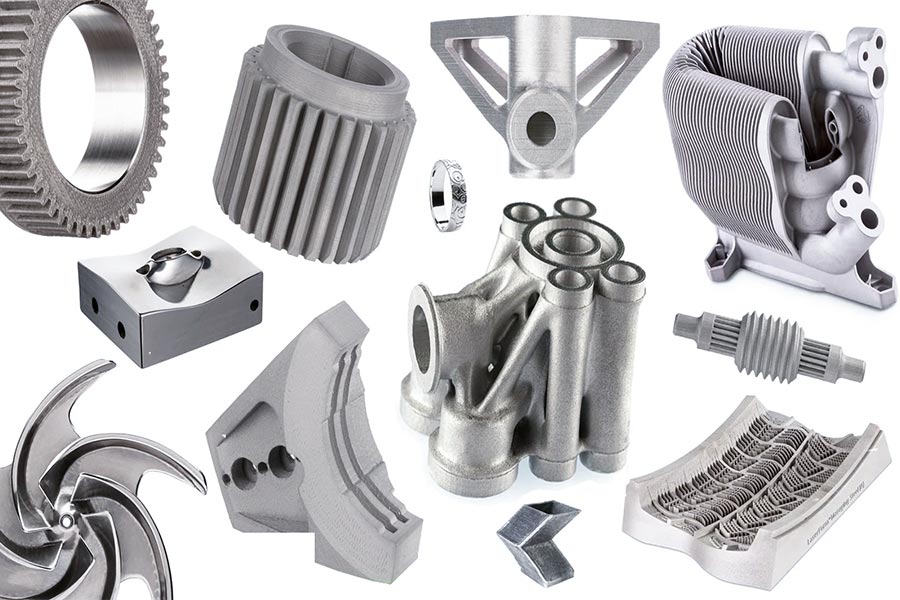
How much does stainless steel 3D printing cost?
The cost of stainless steel 3D printing varies significantly depending on the technology path. Taking a 100mm³ (about palm-sized) component as an example, the cost structure and cost-effectiveness of different solutions are as follows:
1. Industrial metal 3D printing cost
DMLS/SLM technology
The cost of a single piece is about 380 - 500 yuan (including post-processing).
- Equipment depreciation: Based on the 5-year depreciation and 70% utilization rate of $1 million equipment, the cost is about 120-200 yuan;
- Stainless steel powder: the unit price of 316L powder is 80 - 150 yuan /kg, the material of the parts is about 0.2kg, and the cost is 16 - 30 yuan;
- Post-processing: 80 - 150 yuan for HIP and CNC finishing, surface polishing, etc.;
- Labor and gas costs: argon consumption and technician operation costs 50 - 100 yuan.
- Suitable for high-precision functional components such as aerospace joints, medical implants.
Binder jetting technology
The cost of a single piece is 200-300 yuan, and it can be reduced to 150 yuan / piece in mass production.
- Equipment depreciation: equipment cost of 500,000 US dollars, dilutable cost of mass production, about 50-80 yuan for a single piece;
Powder and binder: the unit price of materials is 40 - 60 yuan / kg, the material used in parts is about 0.3kg, and the cost is 12 - 18 yuan; - Sintering cost: 1350°C argon furnace energy consumption and support structure dismantling cost 70 - 120 yuan;
- Post-treatment: sandblasting and impregnation treatment costs 30-50 yuan.
- It is suitable for mass production of simple structural parts, such as industrial formwork and architectural decoration parts.
2.Cost of a Home “Pseudo-Metal” Plan
Metal composite wire (FDM process) is used, and the unit cost is 50 - 80 yuan, which is only suitable for appearance prototyping.
- Wire cost: the unit price of "stainless steel" PLA wire rod is 30 - 50 yuan /kg, the material used for parts is about 0.1kg, and the cost is 3 - 5 yuan;
- Equipment loss: hardened steel nozzle wear and motor load increase, loss of 10 - 20 yuan;
- Post-processing: electroplating, painting to simulate metal texture, the cost is 40 - 60 yuan.
However, these parts are only 1/8 the strength of real stainless steel and can withstand temperatures below 80°C, making them unsuitable for load-bearing, high-temperature, or electrically conductive applications.
3. Cost comparison and selection guide
| Technical solution | Unit cost | Minimum order quantity | Mechanical properties | Suitable scenarios |
|---|---|---|---|---|
| DMLS/SLM industrial grade | 500 | 1 piece | 500-800MPa | Key functional parts, customized medical implants |
| Binder jetting | 300 | 10 pieces + | 300-450MPa | Batch molds, decorative parts |
| Household metal wire | 80 | 1 piece | 80-110MPa | Appearance prototype, display model |
4. Practical strategies to reduce costs
Design optimization: 30% weight reduction and 20% material cost savings through topology optimization; Reduce structures with an inclination angle of less than 45°, reducing support structures and post-processing costs.
Mass production: the binder jetting technology produces more than 10 pieces, and the unit price can be reduced by 30%; Choose shared industrial equipment rental services such as Xometry and Protolabs to reduce equipment investment.
Domestic substitution: the unit price of domestic 316L powder is reduced to 60 yuan/kg (imported more than 100 yuan); The procurement cost of domestic equipment such as Huashu Hi-Tech is 40% lower than that of imports.
5. Comparison of actual cases
Take a stainless steel gear with a diameter of 50mm and a thickness of 10mm as an example:
- DMLS solution: 420 RMB/piece (including HIP treatment and polishing), service life 100,000 rpm;
- Binder jetting: when mass production of 50 pieces, the unit price is 180 yuan / piece, and the service life is 30,000 rpm;
- Household wire printing: 70 yuan / piece, the tooth is broken after running 500 rpm.
Overall, the industrial-grade solution is suitable for high-performance needs, and the household "pseudo-metal" wire is only for appearance. When budgets are limited and metal properties are required, binder jetting technology can be used for mass production or outsourced machining of complex components.
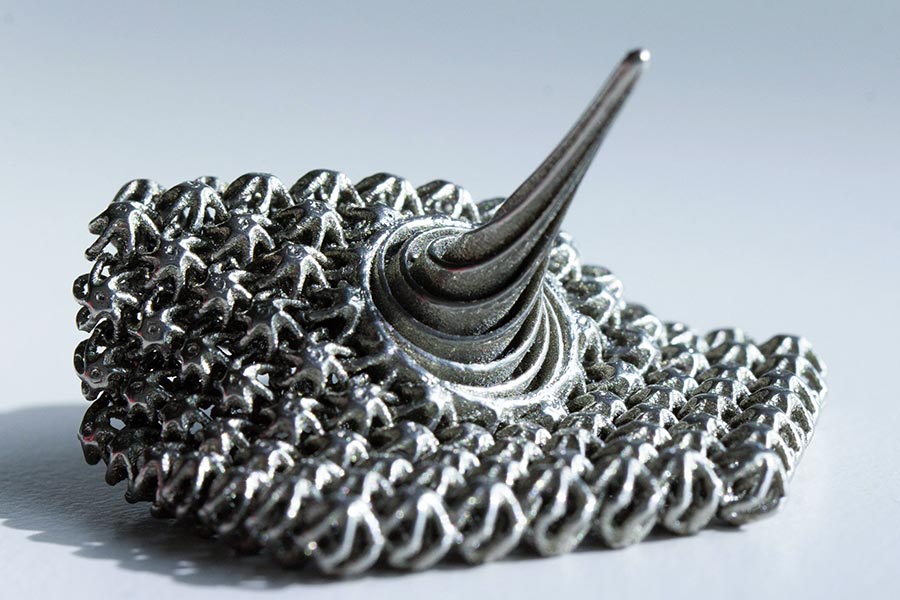
Which industries have applied stainless steel 3D printing?
Stainless steel 3D printing has been commercialized in many industries due to its unique advantages, and the following are some typical fields and cases:
1. Aerospace: lightweight and high performance
Case in point: NAS 4130 stainless steel for GE additive fuel lines was DMLS printed, topology optimized for 40% weight reduction, and passed NASA burst pressure testing in excess of 50MPa.
Benefits: 20 parts are integrated, reducing the risk of weld leakage; Temperature resistance to 650°C; Reduced costs by 30% and cycle times from 12 weeks to 3 weeks.
2. Medical Implantation: Biocompatibility and Osteosopintegration
Case in point: EOS made a 316L porous orthopedic implant with SLM with 65% porosity, pore size 300 - 800μm, elastic modulus 3 - 4GPa, FDA 510k clearance.
Benefits: Promotes bone cell growth and reduces healing time by 40%; CT/MRI compatible, no titanium alloy artifacts; Laser micro-texturing inhibits bacterial attachment by 90%.
3. Energy equipment: corrosion-resistant and complex flow paths
Case in point: Siemens uses SLM to print a gas turbine combustion chamber made of Inconel 625/316L gradient material with 0.8mm thick conformal cooling channels and a high temperature resistance of 980°C.
Benefits: 50% improved cooling efficiency and extended turbine life to 80,000 hours; 15% reduction in NOx emissions; The cost is 25% lower than traditional at $12,000 per unit.
4. High-end jewelry: customization and material innovation
Case: 18K gold-stainless steel hybrid ring is printed simultaneously by DMLS with an interface bond strength of 200MPa to solve the delamination of dissimilar metals.
Advantage: 0.1mm openwork relief (not possible with tradition); 70% reduction in material costs (90% reduction in gold consumption); Gradient heating under inert gas to prevent gold-iron segregation.
5. Automobile Manufacturing: Lightweighting and Functional Integration
Case in point: Porsche's 17 - 4PH stainless steel electric racing brake calipers made of SLM have an H900 yield strength of 1,300MPa after heat treatment, which is 20% lighter than aluminum alloy.
Advantages: Integrated hydraulic channel and sensor slot, 15 fewer assembly parts; The temperature and wear resistance of brake pads is increased by 3 times; Small-scale production from 2023.
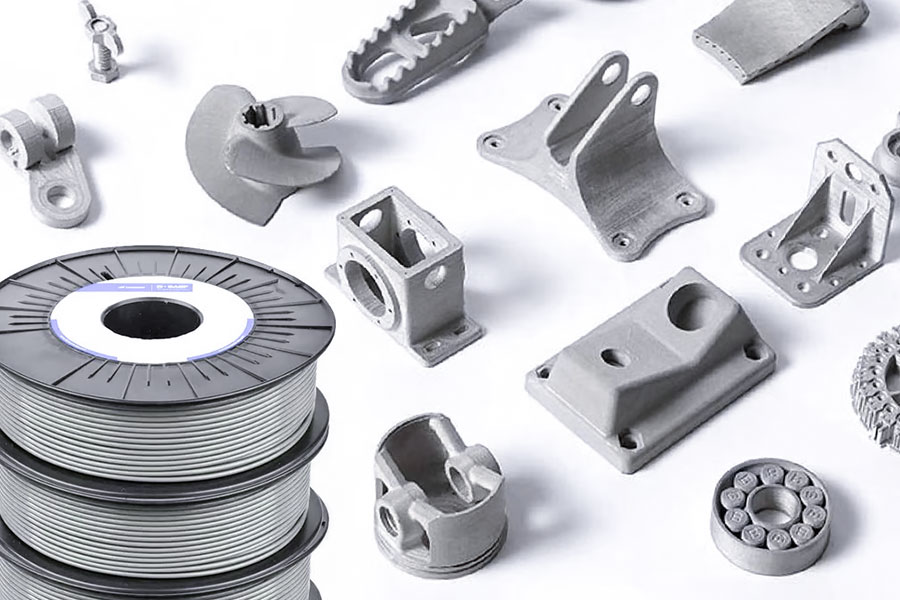
Industry application comparison and key technical indicators
| Industry | Core requirements | Preferred process | Material grade | Precision requirements |
|---|---|---|---|---|
| Aerospace | Lightweight/high temperature resistance | DMLS/SLM | NAS 4130、316L | ±0.05mm |
| Medical | Biocompatible/porous structure | SLM | 316L、304L | ±0.1mm |
| Energy | Corrosion resistance/complex flow channel | SLM+EBM | 316L、17-4PH | ±0.2mm |
| Jewelry | Fine texture/heterogeneous materials | DMLS | 316L+precious metals | ±0.03mm |
| Automotive | High strength/functional integration | SLM | 17-4PH、15-5PH | ±0.1mm |
How to solve the performance defects of stainless steel prints?
Stainless steel 3D printing is affected by the process, and the printed parts are prone to defects such as porosity, surface roughness, residual stress, etc., and can be improved with the help of post-processing technology to meet industrial applications. The specific scheme is as follows:
1. Handling of internal defects
- Hot Isostatic Pressing (HIP): Processed at 1120°C, 100MPa argon for 4 hours, using plastic deformation and diffusion welding to eliminate porosity. It can reduce the porosity from 0.5% to less than 0.02% (according to ASTM F3055), so that the fatigue life of 316L material can be increased from 10⁵ cycles to 10⁶ cycles, and the cost is about 80 - 150 yuan/kg, accounting for 20% - 30% of the total part cost.
- Vacuum annealing: Hold at 900 - 1050°C for 2 hours and cool to room temperature at less than 5°C/min to release more than 90% of residual stress, reduce the risk of deformation, and increase material elongation from 15% to 30%.
2. Improved surface quality
- Electropolishing: 30% phosphoric acid and 5% sulfuric acid mixed electrolyte at 50 - 70°C, 20 - 50 A/dm² current density for 5 - 15 minutes, reducing the surface roughness Ra from 12 μm to 0.8 μm (according to ASTM B912 medical grade) and extending the corrosion resistance time from 48 hours to 500 hours in salt spray testing.
- Sandblasting Mechanical Polishing: Sandblasting with 50 - 100μm glass beads at a pressure of 0.3 - 0.5MPa to remove the sticking powder, and then grinding with 800 - 1200 mesh CNC diamond to the mirror surface (Ra <0.1μm), suitable for appearance parts and food-grade equipment.
3. Functional enhancement means
- Physical Vapor Deposition (PVD) Coatings: TiN coatings can be deposited for surface hardness up to HV 2400 and a coefficient of friction down to 0.15, while CrAlN coatings are temperature resistant to 900°C for high-temperature components. A 2 to 5 μm coating is required at a vacuum level of < 5×10⁻³Pa, a target current of 80 - 120 A, and a target current of 400 - 500°C with a binding force of more than 80 N (according to ISO 26443).
- Laser Surface Remelting (LSR): A high-energy laser scans the surface twice, forming a dense microcrystalline layer with grains less than 1 μm, increasing surface hardness from HV 200 to HV 400 and increasing wear resistance by a factor of 4 (according to ASTM G65 abrasion test).
4. Accuracy of the repair method
- CNC machining (CNC) finishing: carbide tools for roughing, with a stock removal of 0.2 - 0.5mm to correct large dimensional deviations; CBN tools for finishing with a stock removal of 0.05 - 0.1mm, ensuring an accuracy of ±0.01mm, at a cost of 15% - 25% of the total manufacturing cost.
- Adaptive calibration algorithm: Obtain data through 3D scanning with an accuracy of ±5μm, and perform 0.1° - 0.5° pre-twisting of the CAD model according to the SLM process deformation law to generate a compensated machining path and improve dimensional accuracy.
5. Post-processing solution selection guide
| Defect type | Preferred post-processing technology | Second choice | Cost-sensitive alternative |
|---|---|---|---|
| Internal pores | HIP + vacuum annealing | High temperature sintering (binder jetting) | None (non-compromise) |
| Surface roughness | Electrolytic polishing + CNC | Sandblasting + chemical passivation | Manual polishing (Ra>3μm) |
| Low hardness | PVD coating | Laser quenching | Nitriding treatment (HV 800) |
| Dimensional deviation | CNC finishing + adaptive calibration | Electrospark machining (EDM) | Selective repair welding + grinding |
Typical cases
- Aviation Hydraulic Manifold (17 - 4PH material): 0.3% porosity after SLM printing, Ra 15μm surface after printing. After HIP (1100°C/100MPa), electropolishing and TiN coating, it is AS9100D certified and has a service life of more than 100,000 cycles.
- Medical surgical forceps (316L material): the bacterial adhesion rate on the surface is not up to standard. After laser remelting (Ra 0.4μm) combined with Ag ion implantation, the antimicrobial rate exceeds 99.9%, and it is FDA 510 (k) certified.
With a well-planned "print-and-finish" process, the overall performance of stainless steel 3D prints can match or even exceed that of traditional manufacturing. Especially in high-value fields such as aerospace and medical, although post-processing costs account for 40% to 60%, it is indispensable to ensure product quality. With the implementation of the ISO/ASTM 52928 post-processing standard, stainless steel additive manufacturing will accelerate towards large-scale production.
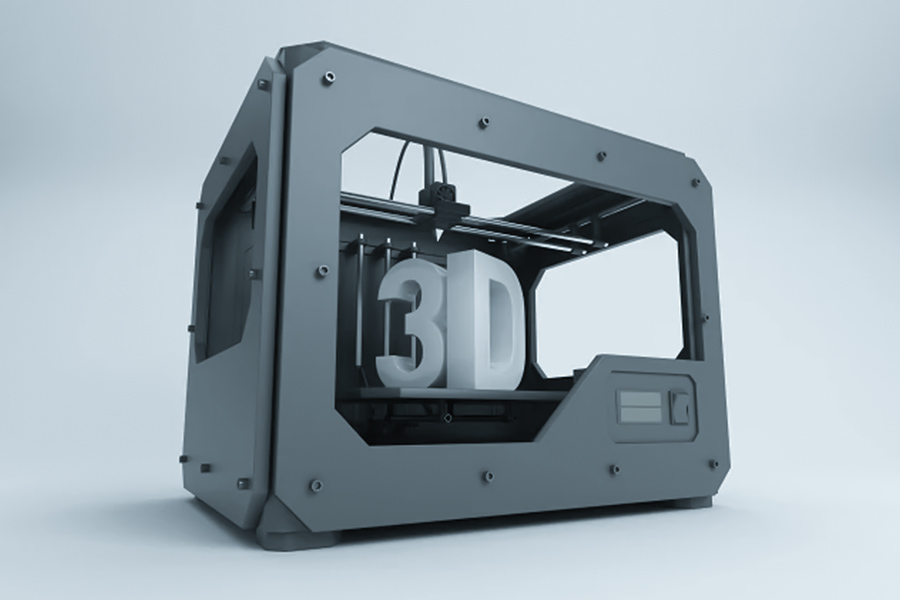
Summary
3D printers are fully capable of printing stainless steel, but they need to rely on industrial-grade metal additive manufacturing technology (such as SLM, DMLS), which uses high-energy lasers to melt 15-45μm stainless steel powder layer by layer to achieve high-precision molding of complex structural parts. Its mechanical properties can reach more than 90% of traditional forgings, and it has been successfully applied to high-end fields such as lightweight aerospace components, porous medical implants, and energy corrosion-resistant equipment. Although it currently faces challenges such as high equipment costs (more than 500,000 US dollars per unit) and complex post-processing processes, with the popularization of domestic equipment, standardization of powder materials, and optimization of AI processes, stainless steel 3D printing is moving from prototype manufacturing to large-scale mass production. In the next five years, it is expected to achieve a breakthrough of more than 30% cost reduction in the automotive, construction and other fields, and completely revolutionize the metal manufacturing industry chain.
📞 Phone: +86 185 6675 9667
📧 Email: info@longshengmfg.com
🌐 Website: https://lsrpf.com/
Disclaimer
The content of this page is for informational purposes only.LS SeriesNo representations or warranties of any kind, express or implied, are made as to the accuracy,completeness or validity of the information. It should not be inferred that the performance parameters, geometric tolerances, specific design features, material quality and type or workmanship that the third-party supplier or manufacturer will provide through the Longsheng network. This is the responsibility of the buyerAsk for a quote for partsto determine the specific requirements for these parts.please Contact us Learn more information.
LS Team
LS is an industry-leading companyFocus on custom manufacturing solutions. With over 20 years of experience serving more than 5,000 customers, we focus on high precisionCNC machining,Sheet metal fabrication,3D printing,Injection molding,metal stamping,and other one-stop manufacturing services.
Our factory is equipped with more than 100 state-of-the-art 5-axis machining centers and is ISO 9001:2015 certified. We provide fast,efficient and high-quality manufacturing solutions to customers in more than 150 countries around the world. Whether it's low-volume production or mass customization,we can meet your needs with the fastest delivery within 24 hours. chooseLS TechnologyIt means choosing efficiency, quality and professionalism.
To learn more, please visit our website:www.lsrpf.com

FAQs
1. Can all 3D printers print stainless steel?
No. Only industrial-grade metal 3D printers (such as those using SLM (Selective Laser Melting) or DMLS (Direct Metal Laser Sintering) technology) can print stainless steel. Such equipment uses high-energy lasers or electron beams to melt stainless steel powder (such as 316L, 17-4PH), while ordinary home FDM printers cannot reach the melting point of stainless steel (about 1400°C) and lack an inert gas protection environment. They can only print plastic filaments containing metal fillers and cannot achieve real stainless steel functional parts.
2. What special materials are needed to print stainless steel?
Spherical stainless steel powders of 15-45μm grade that meet industry standards must be used (e.g. 316L must meet ASTM F3184). The powder must have high sphericity (>95%) and low oxygen content (<0.1%) to ensure good fluidity during printing and avoid oxidation embrittlement. Ordinary metal wires (such as "stainless steel PLA") are essentially plastic mixed with metal powders, with a strength less than 1/8 of that of real stainless steel, and are only suitable for decorative purposes.
3. Can stainless steel 3D printed parts be used in industrial scenarios?
Absolutely! Industrial-grade stainless steel 3D printed parts have passed many international certifications and have been put into practical application. For example, GE Additive's 316L stainless steel fuel nozzle manufactured using SLM technology has passed NAS 4130 aviation certification and has been successfully used in LEAP engines, achieving a 40% weight reduction and a 5-fold increase in lifespan; in the medical field, EOS's porous orthopedic implants (65% porosity) have been approved by the FDA to promote bone cell growth and shorten the recovery cycle. After hot isostatic pressing (HIP) and electrolytic polishing, the printed parts have a tensile strength of 500-800MPa and corrosion resistance equivalent to forged parts, fully meeting high-demand scenarios such as energy and aerospace.
4. Is the cost of stainless steel 3D printing so high that it is difficult to popularize?
Although the cost is higher, it has been significantly reduced and continuously optimized. The cost of a single industrial-grade part is about 200-500 (including post-processing), such as SpaceX's SuperDraco engine components, which integrate 18 parts into 1 through DMLS technology, and the total cost is reduced by 30%. Binder Jetting Technology In mass production, a single piece can be pressed to less than $150 (e.g., industrial molds). The popularization of domestic equipment (such as BLT) and open powder systems is expected to reduce the comprehensive cost by another 30% in 2025, and the popularization will accelerate in the future in the fields of automobiles and construction.







